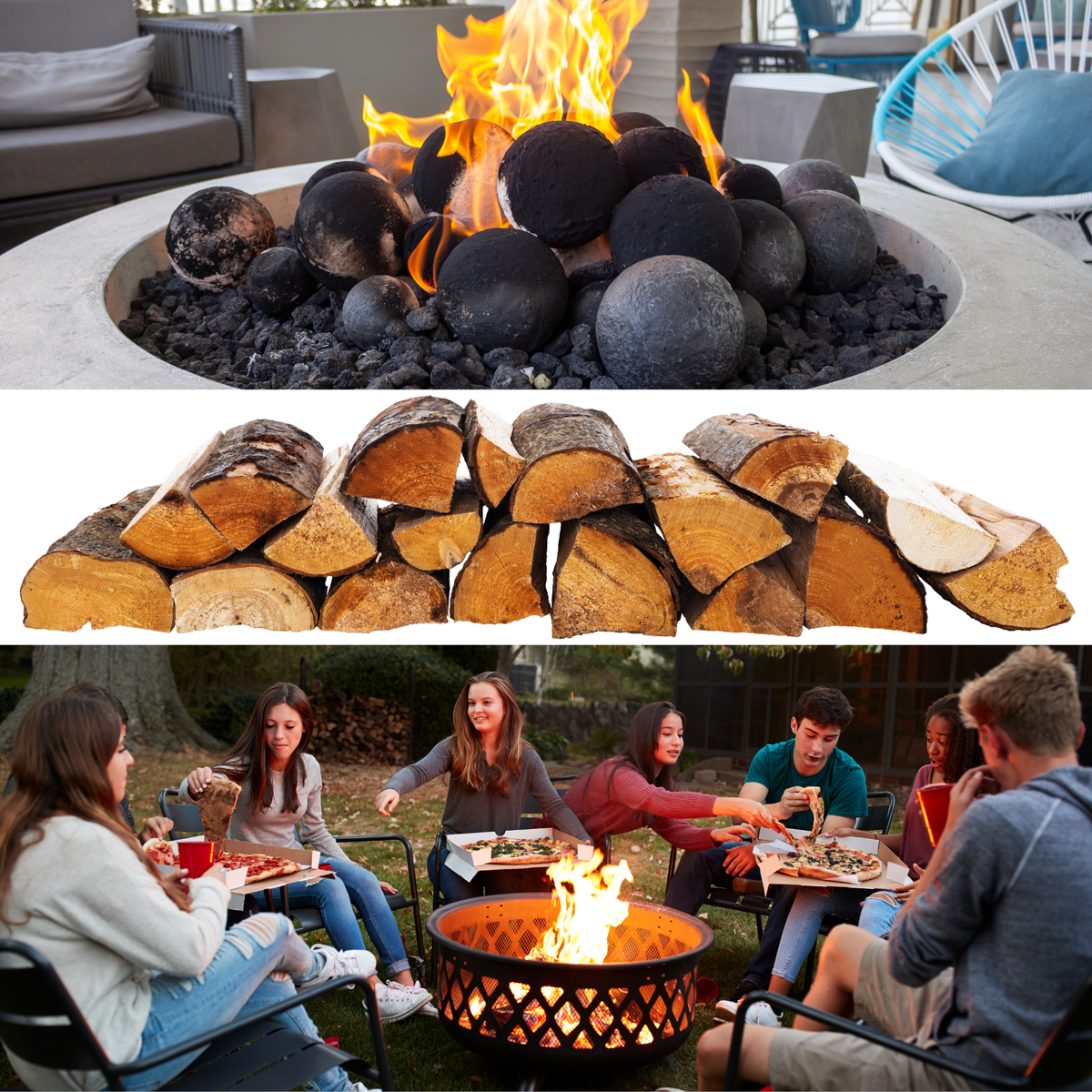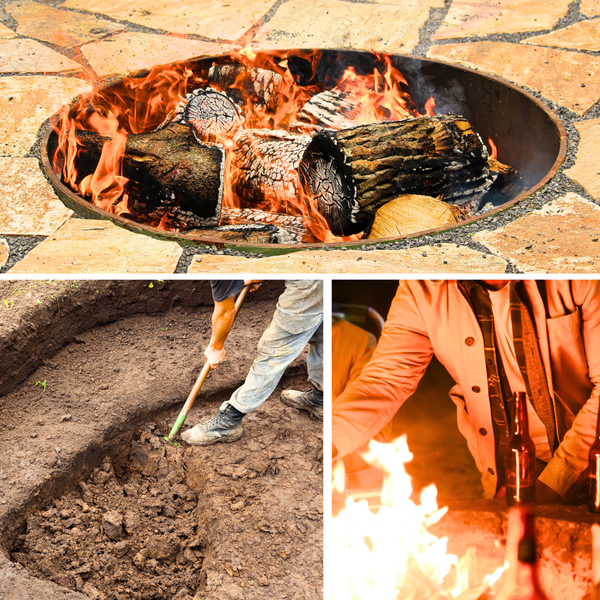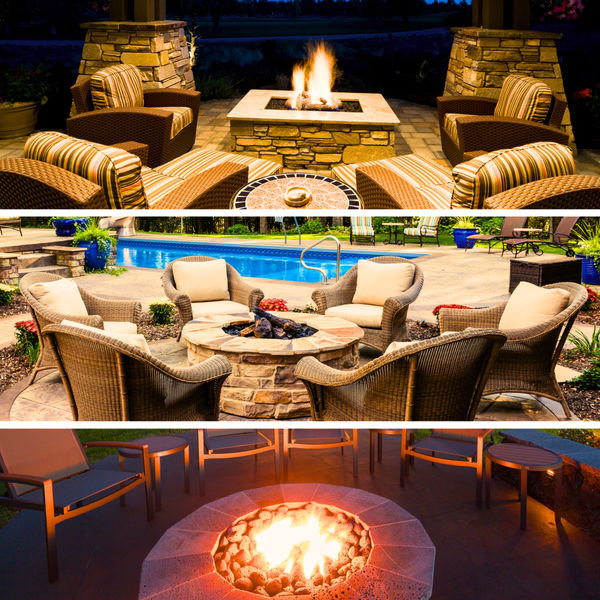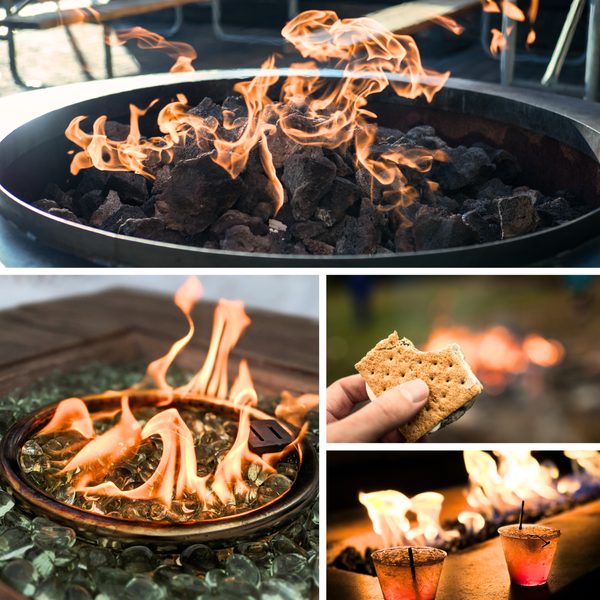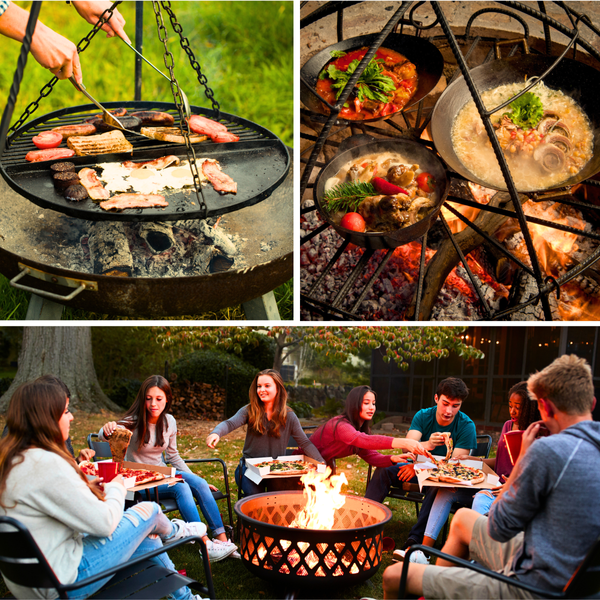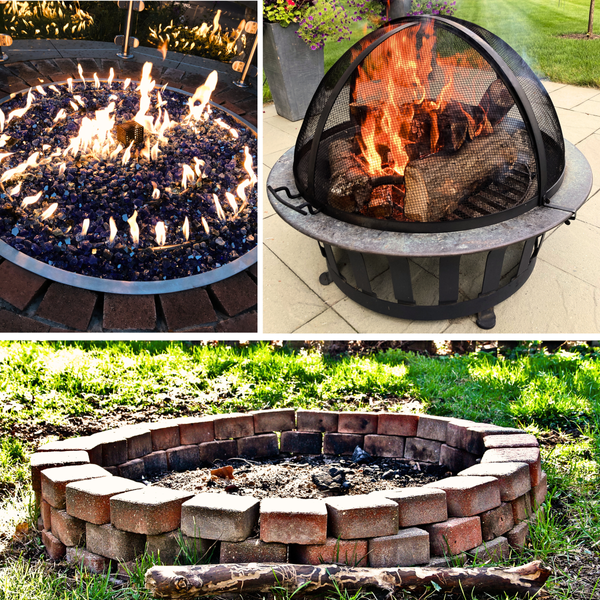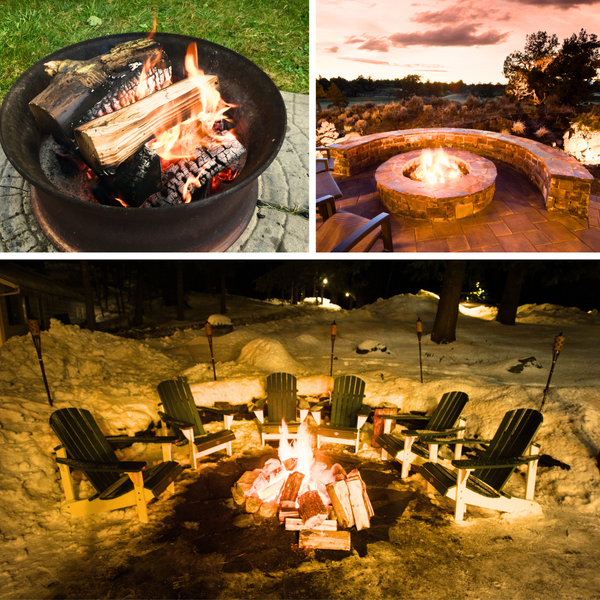Outdoor living spaces have become extensions of our homes, and a fire pit can be the heart of these spaces, providing warmth, ambiance, and a place for gathering. But when it comes to choosing between a propane fire pit or a wood burning fire pit, the decision can be tough. Both have their unique advantages and considerations. In this comprehensive comparison, we'll explore the ins and outs of each option to help you make an informed decision.
Key Considerations:
- Understand the differences between propane and wood burning fire pits in terms of convenience, maintenance, and ambiance.
- Learn about the safety considerations and environmental impact of both fire pit types.
- Discover the ongoing costs and energy efficiency associated with propane and wood fire pits.
Introduction to Fire Pit Types
When considering an outdoor fire pit, the two main types you'll encounter are propane fire pits and wood burning fire pits. Each offers a distinct experience and fits different outdoor living styles. Propane fire pits are known for their convenience and clean burning, while wood burning fire pits offer a traditional, rustic feel with the unmistakable scent and sound of burning wood.
Propane Fire Pits: A Modern Twist on Outdoor Warmth
Propane fire pits have gained popularity for their ease of use. With the simple turn of a knob, you can have dancing flames without the need to gather wood or start a fire manually. They are extremely easy to maintain and can be a focal point in any outdoor area. The propane tank that fuels these pits is often hidden within the unit or in a storage space nearby, keeping your outdoor patio looking sleek and uncluttered.
Convenience and Cleanliness
The convenience of propane fire pits is unmatched. There's no need to install gas lines or worry about gas leaks, as they typically run on a standard propane tank similar to that of a gas grill. This makes them portable and perfect for smaller outdoor spaces. Additionally, propane fire pits are known for their clean burning, producing no smoke or ash, which means less cleaning and more enjoyment.
Safety and Environmental Considerations
Safety is a significant advantage of propane fire pits. They present fewer fire hazards compared to wood fires, as there are no flying sparks or intense heat near the surface. Moreover, propane is an eco-friendly fuel source, emitting fewer pollutants than burning wood. However, it's essential to ensure that the gas burner is functioning correctly to prevent any potential gas leaks.
Wood Burning Fire Pits: The Traditional Choice
Wood burning fire pits are the go-to for those who love the authentic experience of a wood fire. The crackling sounds, the smell of burning wood, and the ritual of building a fire are irreplaceable for many. They can burn wood logs or other renewable resources, making them an energy-efficient option for those with access to free or low-cost wood.
The Charm of Wood Fires
The ambiance created by wood burning fire pits is often considered more natural and inviting. The heat generated by burning wood can be more intense, providing more heat to those gathered around. Roasting marshmallows or cooking hot dogs over the open flames adds to the charm and interactive experience that many seek in an outdoor fire pit.
Maintenance and Local Regulations
Wood burning fires require more effort in terms of maintenance. You'll need a steady supply of wood, a place to store it, and the willingness to clean up ash and debris after each use. Additionally, local laws and regulations may restrict wood fires due to smoke and fire hazard concerns, so it's important to check these before making your choice.
Comparing Fuel Source and Energy Efficiency
The fuel source for your fire pit is a critical consideration. Propane is a convenient option, but ongoing costs for refilling the propane tank can add up. Wood can be a more energy-efficient and cost-effective choice if you have a readily available supply. However, the energy efficiency of either wood or propane fire pits also depends on the design and how well they retain and radiate heat.
Ease of Use: Propane vs. Wood Fire Pits
When it comes to ease of use, propane gas fire pits take the lead. With a simple turn of a knob, you can ignite a propane gas fire pit, offering immediate warmth and ambiance without the need for kindling or constant tending. This convenience is a significant advantage for those who want to enjoy their outdoor space without the prep work. Propane pits are also known for their clean burn, leaving no ash or debris to clean up afterward, making them a hassle-free option for a cozy evening outdoors.
In contrast, wood fire pits require a bit more elbow grease to get going. You'll need to gather wood, build the fire, and maintain it throughout the evening. While this can be a fun activity for some, it can also be seen as a chore for others. However, the effort comes with a reward: the crackling sound and the smell of burning wood, which many find irresistible. It's a more hands-on experience that can be both meditative and engaging, but it's not as straightforward as flipping a switch on a gas fire pit.
Durability and Longevity: Gas vs. Wood Fire Pits
When considering a fire pit for your outdoor space, the durability and longevity of the product are crucial factors. Gas fire pits, especially those that are built in, tend to offer a more durable solution. Made from high-quality materials like stainless steel or cast aluminum, they are designed to withstand the elements and provide years of enjoyment with minimal wear and tear. The absence of ash and residue also means that gas fire pits maintain their integrity over time without the corrosive effects that wood embers can have on metal components.
In contrast, wood burning fire pits may require more frequent maintenance to ensure their longevity. The constant exposure to high heat and burning material can lead to a quicker degradation of the fire pit's structure. However, with proper care, such as using a protective cover and regular cleaning, a wood fire pit can also be a long-lasting addition to your backyard. It's important to consider the level of commitment you're willing to invest in maintenance when choosing between a gas firepit and a traditional wood burning option.
Lighting Methods: Quick Ignition vs. Traditional Fire Starting
Lighting a fire pit can be a matter of convenience or an experience in itself. Gas fire pits offer an energy efficient and instant lighting solution. With the turn of a knob or the push of a button, you can have a roaring fire within seconds, thanks to the modern ignition systems. This ease of use is particularly appealing for those who want to enjoy their outdoor space without the hassle of building a fire from scratch. The quick ignition also means you can easily control the flame size and intensity, making it a safer option as it reduces the safety hazard associated with open flames.
On the other hand, lighting a wood burning fire pit is a more traditional process that can be both ritualistic and satisfying. It involves gathering kindling, arranging logs, and nurturing the flame until it's strong enough to sustain itself. While this method takes more time and effort, it can be a rewarding and eco friendly activity, especially for those who appreciate the charm of a natural wood fire. The light and warmth from a wood fire pit are often seen as more organic, offering a different kind of ambiance that many find irresistible.
Customization and Design Options
For those looking to add a stylish feature to their outdoor space, the design and customization options are vast with both wood and gas fire pit options. Gas fire pits, especially built-in models, can be tailored to fit the aesthetic of your outdoor area. They can be constructed with various materials like stone, metal, or concrete and can include decorative elements such as glass rocks or ceramic logs. The design of a gas fireplace or gas pit can be sleek and modern, fitting seamlessly into a well-curated patio or garden.
Wood fire pits, on the other hand, offer a more rustic charm. They can be the centerpiece of a backyard gathering, often designed to be portable so you can move them as needed. While they may not have the same built-in, customized look as a natural gas fire pit, they provide a traditional and natural ambiance that's hard to replicate. Whether it's a simple metal bowl or an elaborate stone structure, a wood fire pit can enhance the outdoor experience with its timeless appeal.
Assessing the Ambiance and Aesthetic Appeal
The ambiance of your outdoor living space is greatly influenced by your choice of fire pit. Propane fire pits offer a modern look with clean lines and often come with features like lava rocks or glass beads that enhance the visual appeal. Wood burning fire pits, on the other hand, provide a more traditional and natural aesthetic that can blend seamlessly with your outdoor landscape.
Space and Installation Requirements
How much space you have available can dictate which fire pit is best for you. Propane fire pits are suitable for smaller outdoor spaces or patios with patio furniture, as they don't require a large area for safety. In contrast, wood burning fire pits need more open space to accommodate the fire pit space and storage for wood, as well as a safe distance from any potential fire hazards.
Safety First: Fire Hazards and Gas Leaks
Safety should always be a top priority when considering a fire pit. Wood burning fire pits pose a higher fire hazard due to flying embers and the need for a fire pit space clear of flammable materials. Propane fire pits, while generally safer, still require vigilance to prevent gas leaks and ensure the gas lines or propane tank are in good condition.
Personal Preference and Lifestyle Fit
Ultimately, the choice between a propane fire pit or wood burning fire pit comes down to personal preference and lifestyle. If you value convenience and a modern aesthetic, a propane gas fire pit might be the right choice. For those who enjoy the process and tradition of a wood fire, a wood burning fire pit could be the perfect addition to your outdoor living space.
Environmental Impact and Sustainability
Considering the environmental impact is essential when choosing between propane and wood fire pits. Propane is a clean-burning fuel, but it is not a renewable resource. Wood, when sourced sustainably, can be a renewable resource, but burning wood releases smoke into the atmosphere, which can be a concern for air quality.
Cost Comparison: Initial Investment and Ongoing Expenses
The initial cost of a propane fire pit can be higher than a wood burning fire pit, especially if you opt for a built-in model or one that requires a natural gas line. However, the ongoing costs of propane can be more predictable compared to the fluctuating price of wood, especially if you don't have access to free or cheap wood.
Maintenance and Upkeep: What to Expect
Maintenance is another area where propane and wood fire pits differ significantly. Propane fire pits are low-maintenance, requiring only occasional cleaning and propane tank refills. Wood burning fire pits demand more regular cleaning to remove ash and debris, and you'll need to manage your wood supply and storage space.
The Verdict: Which Fire Pit Reigns Supreme?
Choosing between a propane fire pit or wood burning fire pit is not a one-size-fits-all decision. Each has its benefits and drawbacks, and the best choice depends on your specific needs, preferences, and outdoor living space. Consider all factors, from convenience and ambiance to safety and cost, before making your final decision.
Summary
In the debate between a propane fire pit or wood burning fire pit, both contenders have their merits. Propane fire pits offer ease of use, cleanliness, and modern appeal, while wood burning fire pits provide a traditional experience with natural ambiance. Safety, environmental impact, space requirements, and personal preference play significant roles in determining the best fit for your outdoor area. Weighing the ongoing costs, energy efficiency, and maintenance needs will help you choose the fire pit that aligns with your outdoor living goals.
FAQ Section
Q: Are propane fire pits safer than wood burning fire pits?
A: Generally, propane fire pits are considered safer because they produce no sparks or embers that could ignite nearby materials. However, it's important to regularly check for gas leaks and ensure the propane tank is in good condition.
Q: Can I cook over a propane fire pit like I can with a wood burning fire pit?
A: Yes, many propane fire pits are designed to allow for cooking, similar to a gas grill. However, you won't get the same smoky flavor that wood fires can impart to food.
Q: How do I decide between a propane or wood burning fire pit for my outdoor space?
A: Consider factors like convenience, maintenance, the ambiance you prefer, safety, environmental impact, and your available space. Also, think about whether you enjoy the process of building and maintaining a wood fire or if you'd prefer the ease of a propane fire pit. Your personal preference and lifestyle will ultimately guide your decision.



